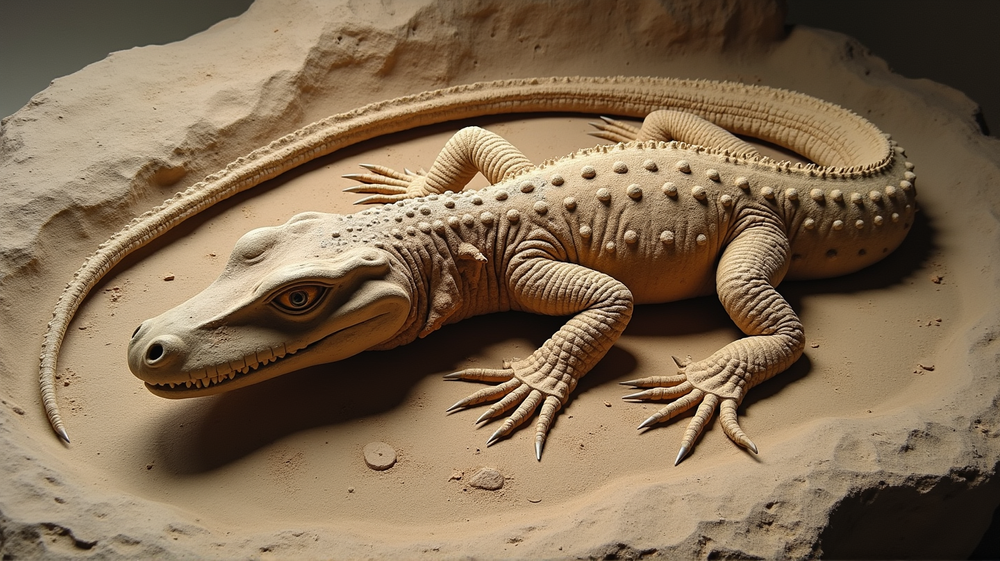New scientific revelations have come to light following the analysis of a 240-million-year-old reptile fossil, shedding new insights into the evolutionary journey of prehistoric species. This unique discovery marks the first time a fossil has been unearthed displaying skin and partially webbed feet, providing substantial evidence of how early reptiles may have swum similarly to seals.
Diving into the Ancient Past
Unearthed from Monte San Giorgio, a UNESCO World Heritage Site straddling the borders of Switzerland and Italy, this groundbreaking find originates from a region once submerged under a tropical lagoon. An environment characterized by low oxygen levels and mineral-rich waters, it appears to have played a crucial role in the preservation of soft tissues like the skin, muscles, and even internal organs in its fossilized inhabitants. The Monte San Giorgio site continues to be a pivotal source of paleontological treasures, offering window-like insights into life post the Permian mass extinction—an event renowned for eradicating 90% of ocean life, nearly 252 million years ago.
A Peek into Lariosaurus Valceresii
The specimen in question is a member of the species Lariosaurus valceresii, a small aquatic reptile that thrived soon after the Permian mass extinction. According to paleontologist Silvio Renesto and his team from the University of Insubria in Italy, the reptile’s adaptation to marine life was facilitated by the vacant ecological niches and the abundance of food in post-extinction oceans. Their exhaustive analysis using high-resolution photography and modern electron microscopy revealed fascinating discrepancies with prior assumptions about the reptile’s anatomy, particularly its limbs.
Rethinking Old Hypotheses
The fossil’s intricacies contradict earlier beliefs, showcasing partially webbed hands and feet with exposed digits contrary to the completely embedded flippers as previously assumed. Its robust musculature bears testament to its likely method of locomotion through water, paddling its limbs similar to seals rather than employing the tail-driven propulsion seen in crocodiles. This revelation is pivotal in understanding the evolutionary propulsion methods of ancient aquatic reptiles and how their descendants—like plesiosaurs—evolved into adept marine inhabitants.
An Extraordinary Finding
Experts, including Sven Sachs from the Natural History Museum in Germany, regard this fossil discovery as extraordinary, emphasizing the fossilized soft tissues that paint a complete picture of ancient animal appearances, capturing dimensions hard to imagine through skeletal remains alone. As Miguel Marx of Lund University aptly remarks, “Such discoveries grant us profound insights into the form and function of ancient life, shaping our understanding of evolutionary progressions.”
A discovery like this reiterates how fossils from Monte San Giorgio are not just about bones but are a step back in time, providing an unparalleled glimpse into the intricate narrative of life millions of years ago. According to Science News, it is indeed a revolutionary period for paleontologists passionately unraveling the enigmatic mysteries of prehistoric life.












